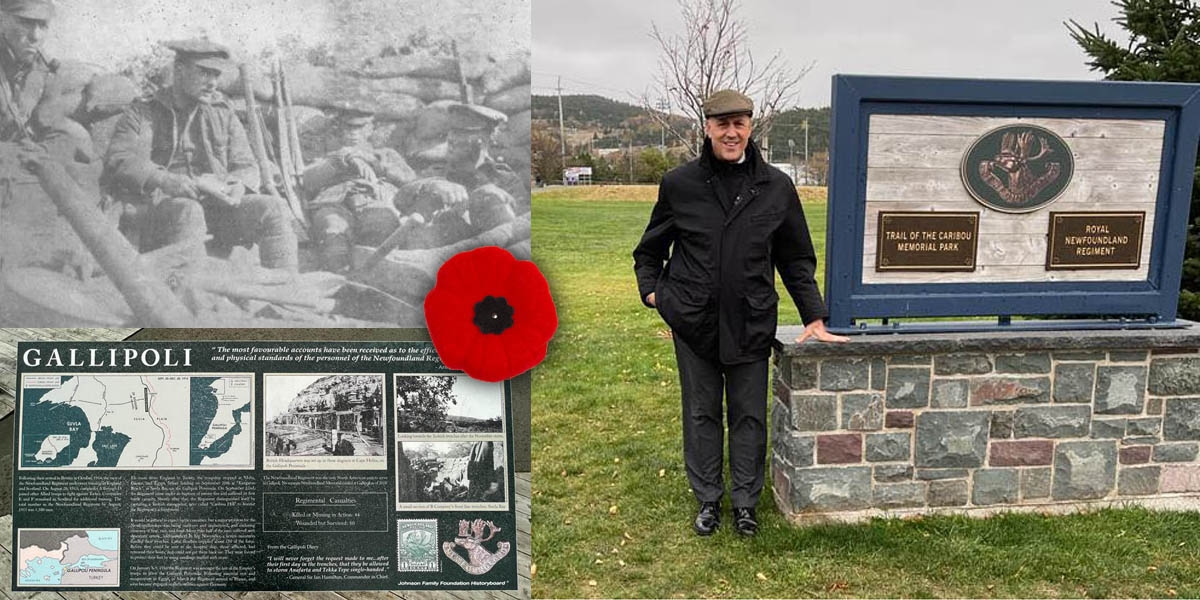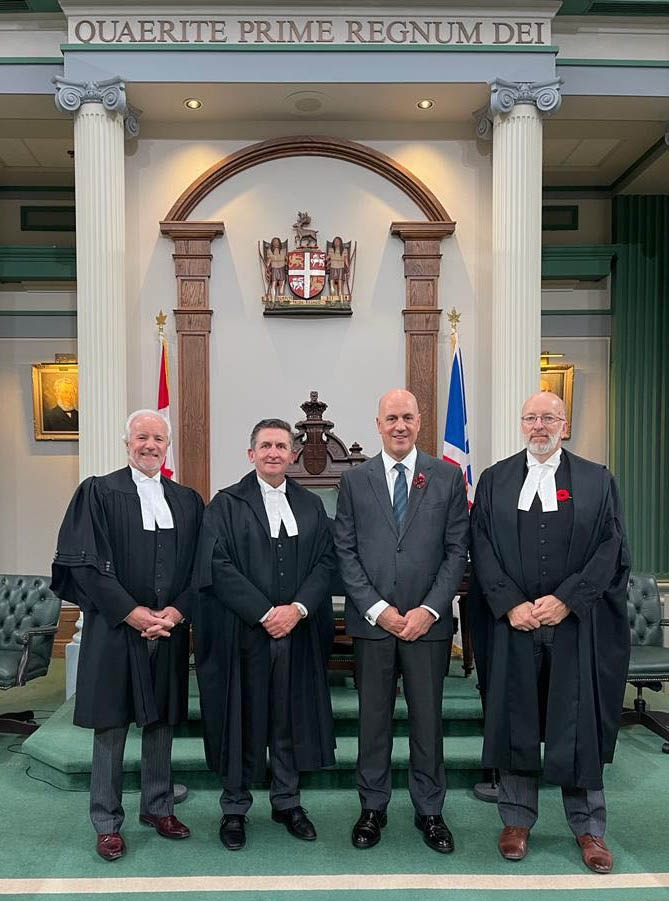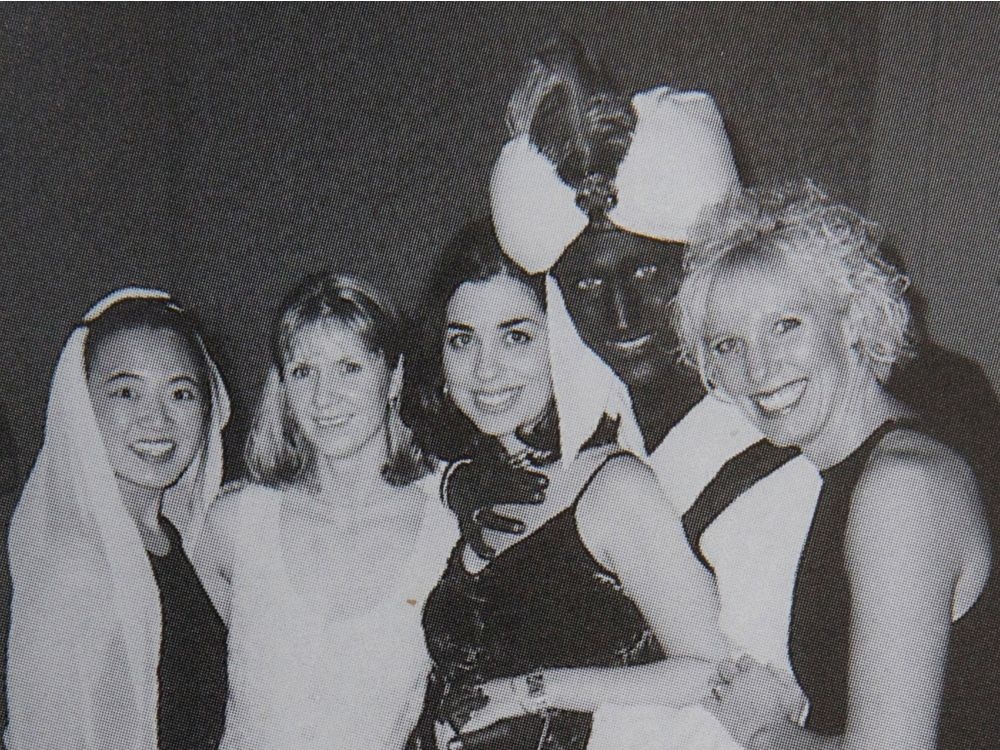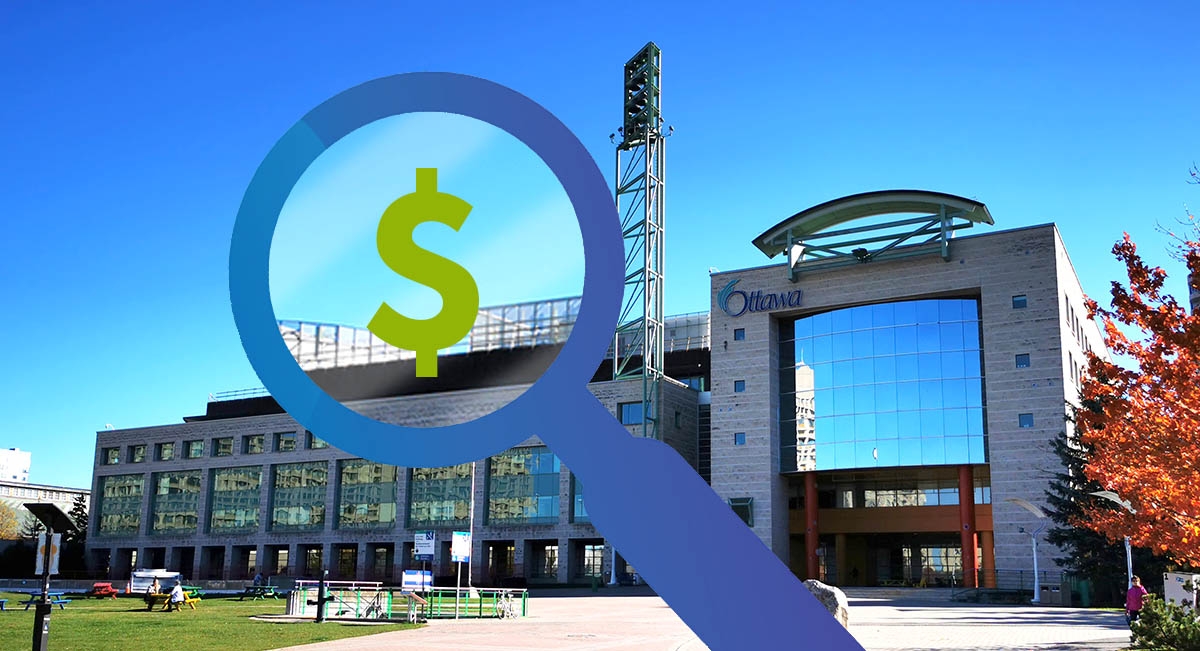
Remembering Gallipoli through Newfoundlanders’ and Turkish eyes
ABOVE: Archival photo of Newfoundland soldiers manning the post at Caribou Hill. Descriptive signage at Caribou National Trail Park in Saint John's, Newfoundland. (RIGHT) His Excellency Kerim Uras, Ambassador of Turkiye to Canada.
In 1917, Turkiye did not exist as a country, and Newfoundland wasn’t yet part of Canada. The Battle of Gallipoli forever changed both.
Turkiye would come to exist as a state because of the bravery of one commander who served with distinction and courage during the 1915 battle, cementing his role as a military commander and civic leader during the subsequent collapse of the Ottoman Empire. Newfoundlanders would give all they had to the war effort spilling more blood than any commonwealth Dominion of its size, creating a legacy of sacrifice that is still revered in the province today.
The Gallipoli campaign is widely considered one of the British Empire’s biggest military disasters. Stuck in a stalemate at the beginning of 1915, after nearly a year of combat with Germany, the Western powers of the Entente Alliance sought a way to assist their Russian ally who was fighting the combined might of their common enemy, the Triple Alliance. If the Entente could take Constantinople (today known as Istanbul), they could open access to the Black Sea, allowing Russia to receive Western supplies through the Mediterranean. However, Constantinople, the capital of the Ottoman Empire, was heavily defended through the outlying peninsula of Gallipoli in the Dardenelles region. Commonwealth and French troops needed to seize this strategic outlet to reach Constantinople some 300 kilometres east.
The first assault by ground units began on April 25, 1915, led by Australian and New Zealand troops and Irish and French soldiers. The battle quickly stalled into the same brutal static warfare that had bogged down the Western front beforehand. Forty-four thousand soldiers were killed at Gallipoli. If more planning had been done, countless deaths could have been avoided, but the British army’s command thought that the Ottomans would surrender. The allied high command heavily underestimated the fighting skill of the Ottoman-Turk troops.
After some five months of carnage, 1000 Newfoundlanders had their baptism by fire when they landed at Gallipoli to join already present allied forces in September of 1915. The first battle the Royal Newfoundland Regiment fought in its history saw them lose some 40 soldiers. After nearly a year of intense, brutal, and often hand-to-hand fighting, Gallipoli was evacuated. The Ottomans had done what Britain thought was impossible and defeated the western powers.
The Newfoundland Regiment would go on to fight at the Battle of the Somme in France (1916), where it was virtually annihilated in a senseless attack at Beaumont Hamel, forcing it to be rebuilt with new troops from the tiny Dominion. By the war's end, Newfoundland had lost 1281 men from an island with a population of less than 250,000.
Not only Commonwealth soldiers suffered at Gallipoli. Approximately 85,000 Ottoman soldiers died in the battle. Gallipoli is considered one of the most significant moments in modern Turkish history. Perhaps most important for Turkiye was the fearless commander and warrior who led from the front throughout the campaign.
Mustafa Kemal commanded the Ottoman 19th division during the battle. Further campaigns against the Russian military in the Caucus region distinguished Kemal, but Gallipoli made him a legend when his stalwart defence helped stall the invasion of his homeland. Kemal would fight for three more years until the powers signed an armistice on October 30, 1918. By the end of the war, he was widely considered one the Ottoman empires best soldiers.
Kemal resigned from the Ottoman Army in 1919, but a life of peace would elude him. With his homeland occupied after the subsequent peace agreement, and because he was a proud and now famous Turkish nationalist and warrior, Kemal led a national revolution to free Turkey from foreign occupation.
Declaring a new capital for the Turkish Republic in Ankara instead of Istanbul, Kemal had to fight the Greek, French, and British troops for what is now modern Turkiye. In defeating the occupiers, he created the secular Turkish Republic, where the religious Ottoman Empire once stood. In the aftermath of these incredible features, the Turkish population would come to call Mustafa Kemal, Ataturk: the father of the Turks. Today, he is still regarded as the father of the nation and is nearly universally adored. With his portrait hung in almost every business and every government building, Ataturk holds a place more significant in the hearts of Turkish people than Washington does in that of Americans.
Newfoundland and the federal government recently completed a project to mark the locations where the Dominion fought its toughest battles of the First World War. A bronze caribou statue marks each of these five sites in France and Belgium. The first and most famous being located at Beaumont Hamel on the Somme, was unveiled in 1925 and became a symbol of the province. However until now, there was no monument where Newfoundland first fought, until this year.
In September, a sixth Caribou monument was unveiled at Gallipoli, 107 years after the battle, marking the spot where Newfoundland’s blood was spilled for the first time on the battlefield. Commemorations were held with ministers from the Turkish and Canadian governments and Dr. Andrew Furey, the premier of Newfoundland. Furey stated at the unveiling that the monument: “Completing the Trail of the Caribou is an important milestone in Newfoundland and Labrador’s First World War story.” He also thanked the Canadian government and the Republic of Turkiye for helping to “properly pay tribute to the Royal Newfoundland Regiment for their years of service and sacrifice.”

ABOVE: His Excellency Kerim Uras, Ambassador of Turkiye to Canada, meets with Premier Furey and members of the Newfoundland House of Assembly.
In a gesture of solidarity and shared history, the Ambassador of Turkiye to Canada, His Excellency Kerim Uras, visited Newfoundland this week. Uras met with members of the Newfoundland House of Assembly, including Premier Furey, where they discussed plans for a Turkish monument in Saint John’s, the completion of the Caribou Trail Monument. Uras also visited the Royal Newfoundland Regimental Museum and the war memorial in Saint John’s dedicated to the regiment.
Allied and friends today, Canada, Newfoundland, and Turkiye share cultural ties formed through immigration, substantive economic ties, and common objectives in NATO defence.
Although 40 Newfoundlanders lay in rest at Gallipoli, they and their descendants can be reassured by the words of the great Turkish statesman and Gallipoli veteran Ataturk: “Those heroes that shed their blood and lost their lives… you are now lying in the soil of a friendly country. Therefore, rest in peace.”
Lest We Forget.










